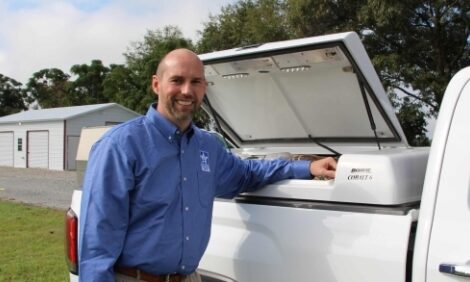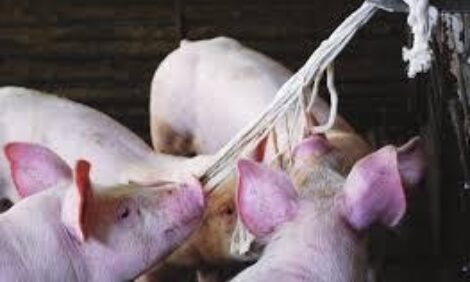



Research continues to dig for POP answers
Searching for strategies to alter the course of pelvic organ prolapse (POP) in sows has been a long, slow climb with progress coming little by little. At the heart of the effort is the Sow Survivability project, which kicked off in 2018 with a US pork industry-wide survey of 104 sow farms in 15 states.
“The long-term goal is to understand the biology and physiology of the sow contributing to POP such that we can use management practices or mitigation strategies to alter the biology or precursors in order to prevent POP,” Jason Ross, director of the Iowa Pork Industry Center (IPIC) at Iowa State University, told Pig Health Today.
When IPIC initiated the survey, the average annualized sow mortality associated with POP for the participating farms was around 3%. Ross’s experience suggests, “Without a lot of data to support it, I would say the POP incidence has probably continued at the same level or has trended slightly upwards.”
To try to gain a better understanding of the issue, researchers have begun investigations to identify which sows are at risk for POP and then how they differ from those at low risk. With each insight or clue, however, comes multiple additional questions.
Sorting high-risk and low-risk sows
Researchers have produced some guidance, including a three-point perineal scoring system for sows in late gestation. An instructional video is available online. Applied 6 to 10 days prior to farrowing, the perineal score helps flag sows at risk of POP.
“Through this scoring system, we can identify high-risk sows, of which 20% to 24% will subsequently experience a POP, whereas for low-risk sows it drops to 1% or less that prolapse,” Ross said.
The perineal scoring system has proven to be a key tool in further investigating POP risk factors by allowing researchers to sort sows into high- and low-risk groups.
They have then collected serum samples and vaginal swabs from those sow groups to examine the microbiota of their reproductive tracts.
“It allows us to understand the differences in physiology in those two different sow groups before they experience a POP,” he noted. This will help researchers design experiments to understand what’s going on and why, and eventually help identify and test mitigation strategies.
A deeper look into the microbiota
To better understand this biology, Ross’s group worked with two sow farms, each in two different states, to sequence the microbiota from sows scored as high risk and low risk for POP.
Working with Dr. Stephan Schmitz-Esser’s group, a microbiologist at Iowa State, they found the microbiota are different between the two POP risk groups, Ross said.
“That was an interesting discovery. We can then go into databases and determine what specific microbes are present and at what relative abundance.”
They found 89 operational taxonomic units, which represent a species or family unit of bacteria, that were differently abundant between the low- and high-risk sow groups.
For further verification, the study was replicated with two different sow farms using different genetics and more sows sampled.
“We found some of the same trends,” Ross said. “The next step is to build an understanding for the [microbe] species that are different. What genes or products do those microbes produce inside the reproductive tract that elicit a biological change in the sow?”
That investigation is underway with Schmitz-Esser’s laboratory, using a process called shotgun sequencing.
There hasn’t been a lot of work done in the sow vaginal microbiome, Ross pointed out, so the project is planning to explore other ideas. Researchers are developing experiments to better understand the microbiome across sow farms, as well as investigating what normal microflora is for a sow farm and whether it changes over a sow’s lifetime.
“We haven’t collected enough data from individual animals over their lifetime to see if the microbiota is set early in life or if it’s something that would be amenable to change or influence,” he said.
Where different management practices or nutritional approaches could be utilized to alter that, and establish a microbiome that’s favorable for productivity and health, are the types of details researchers are now on the front end of discovering and understanding, he added.
Other points to consider
The study also has evaluated serum samples from high- and low-risk sows, which showed some alterations in immune activation in sows that are at a higher risk for POP. Specifically, the circulation of monocytes and lymphocytes is lower in high-risk sows.
“Our interpretation is that’s because those cells may be migrating into reproductive tissues, so it’s reducing their concentration in circulation,” Ross said.
In those same samples, researchers also saw increased lipopolysaccharide-binding protein, which can contribute to the immune response. Some steroid hormone changes also were observed, such as 17beta-estradiol, which tended to be in greater abundance in sows at a higher risk for POP than those at low risk.
Future research will continue to collect vaginal swabs from sow farms across the industry to better understand the characteristics of microbes in the reproductive tract and possible correlations to POP.
Late gestation is a key period
While there are no concrete answers for POP mitigation right now, there are some things that producers and veterinarians can consider, Ross said.
The first is to monitor body condition. Both in-field observations and data support the idea that sows with lower body-condition scores tend to have a higher POP rate. IPIC offers a helpful body-condition scoring video online.
“That fits biologically with what we’ve observed from an immune standpoint,” he explained. “Sows that have an activated immune system will have an increased energy need. So, unless we’re getting more feed into those sows, they won’t be able to elicit the same immune response without compromising their body condition.”
The final 3 to 4 weeks of gestation are a critical period to check each sow to make sure it’s getting all the nutrition it needs, he added.
“That also fits our observations that sow farms using bump-feeding strategies in late gestation, particularly with low-body-condition-scored sows, tended to have lower prolapse rates.”
As for perineal scoring, Ross emphasized that it needs to be applied during the last 7 to 10 days of gestation, just before moving to the farrowing room. There’s little variation among the sows to identify before that stage of gestation.
For now, his advice is to watch sows closely in those last few weeks of gestation to make sure they are maintaining body weight and are in their best health prior to farrowing.






